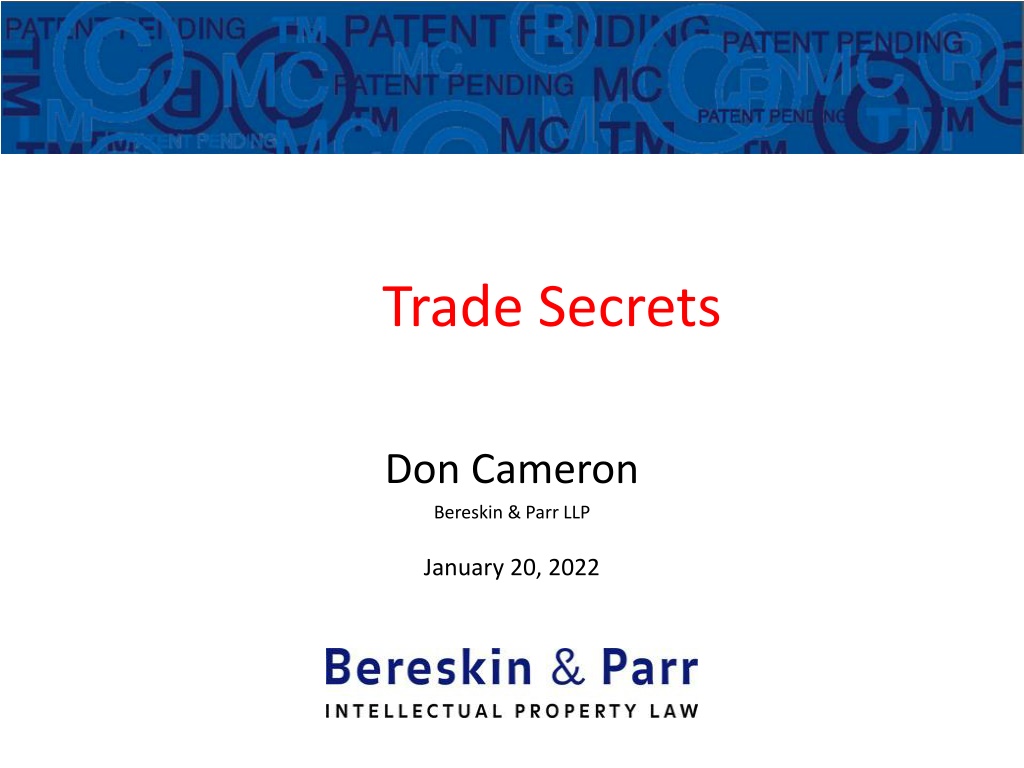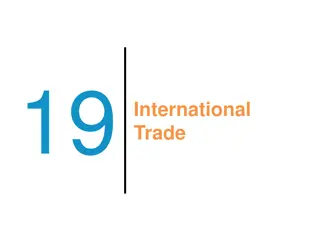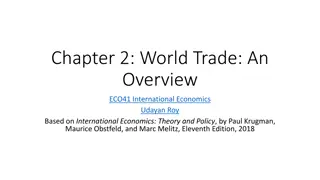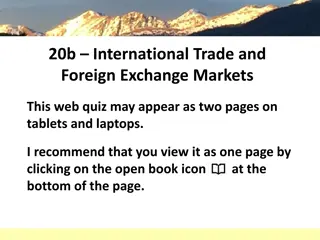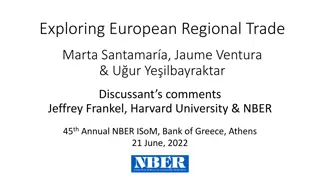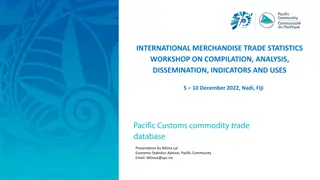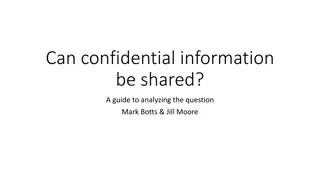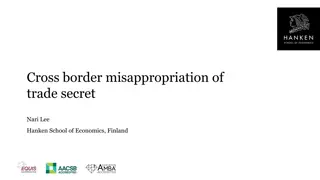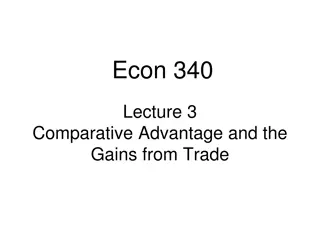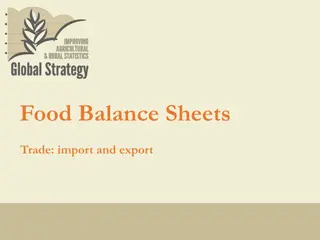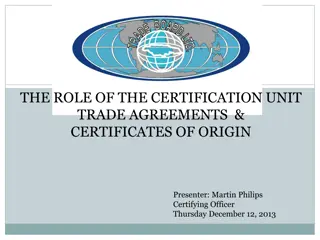Understanding Trade Secrets and Confidential Information Laws
Trade secrets and confidential information play a crucial role in business success. Learn what trade secrets are, how to share and protect them, and how to enforce against their misuse. Explore the legal definitions of trade secrets, their protection under the law, and the criteria that classify information as a trade secret. Gain insights into the complexities surrounding the ownership and remedies for breach of trade secrets.
Download Presentation

Please find below an Image/Link to download the presentation.
The content on the website is provided AS IS for your information and personal use only. It may not be sold, licensed, or shared on other websites without obtaining consent from the author. Download presentation by click this link. If you encounter any issues during the download, it is possible that the publisher has removed the file from their server.
E N D
Presentation Transcript
Trade Secrets Don Cameron Bereskin & Parr LLP January 20, 2022
Trade Secrets/Confidential Information 1. What is it? 2. How do you share it and protect it? 3. How do you enforce against it s mis-use?
Trade Secrets/Confidential Information Confidential Info Trade $ecrets
What is a Trade Secret? To paraphrase Alfred Hitchcock, it s like a McGuffin : Something that somebody has, that everyone else wants.
Is it Property? No, for purposes of the Criminal Code Not taken R. v. Stewart Yes? Buy it, sell it, license it for fashioning the appropriate remedy for the wrongful taking of it: The foundation of the action for breach of confidence does not rest solely on one of the traditional bases for action of contract, equity or property. The action is sui generis relying on all three
Access to Information Act [109] Another influential decision is that of Phelan J. in AstraZeneca, which was a review of a decision to release records related to an NDS. Phelan J. held that Parliament s intention was to protect genuine trade secrets based on the common law definition of the term. He cited the Soci t Gamma definition, but noted that the question is not whether the interpretation of trade secrets should be broad or narrow but whether the record falls within the legal definition of trade secrets (paras. 62-63). He referred with apparent approval to Health Canada s Access to Information Act Third Party Information Operational Guidelines, which sets out four criteria to be met by a trade secret (para. 64). These elements are the same as in the Guidelines in evidence before us, which read: - the information must be secret in an absolute or relative sense (i.e. known only by one or a relatively small number of persons); - the possessor of the information must demonstrate that he has acted with the intention to treat the information as secret; - the information must be capable of industrial or commercial application; - the possessor must have an interest (e.g. an economic interest) worthy of legal protection. [Annex A] [110] Phelan J. concluded, at para. 65: The type of information which could potentially fall into this class includes the chemical composition of a product and the manufacturing processes used. However, it is not every process or test which would fall into this class particularly where such process or test is common in a particular industry. [111] Health Canada argues that this is the appropriate definition of trade secret . I agree. I particularly underline Phelan J. s comment that the point is not whether the term is to receive a broad or a narrow definition (para. 63), but rather that the term should be given its traditional legal meaning. [112] Phelan J. s reasons, along with the portion of the Guidelines which he adopts, appropriately capture that traditional legal meaning. A trade secret for the purposes of s. 20(1) of the Act should be understood as being a plan or process, tool, mechanism or compound which possesses each of the four characteristics set out in the Guidelines which I have quoted above. This approach is consistent with the common law definition of trade secrets and takes account of the clear legislative intent that a trade secret is something different from the broader category of confidential commercial information which is separately and specifically protected under the Act. This approach is also consistent with the use of secrets industriels in the French version of the Act, as discussed above.
New in 2020: Criminal Code s. 391 Trade secret 391 (1) Everyone commits an offence who, by deceit, falsehood or other fraudulent means, knowingly obtains a trade secret or communicates or makes available a trade secret. Trade secret prior knowledge (2) Everyone commits an offence who knowingly obtains a trade secret or communicates or makes available a trade secret knowing that it was obtained by the commission of an offence under subsection (1). Punishment (3) Everyone who commits an offence referred to in subsection (1) or (2) is guilty (a) of an indictable offence and is liable to imprisonment for a term not exceeding 14 years; or (b) of an offence punishable on summary conviction. For greater certainty (4) For greater certainty, no person commits an offence under subsection (1) or (2) if the trade secret was obtained by independent development or by reason only of reverse engineering. Definition of trade secret (5) For the purpose of this section, trade secret means any information that (a) is not generally known in the trade or business that uses or may use that information; (b) has economic value from not being generally known; and (c) is the subject of efforts that are reasonable under the circumstances to maintain its secrecy.
The Secret Recipes Formulae Customer lists Know-how Non-patentable inventions 9
The Secret Public information may become confidential, and a protectable trade secret, when skill and ingenuity are added
IP Asset Shelf Life Coke recipe NEW $ Worth OLD Time
IP Asset Shelf Life NEW Coke recipe no longer secret $ Worth OLD Time
2. HOW DO YOU SHARE IT AND PROTECT IT?
Trade Secrets Very Fragile Assets walk out the door every night You have to: 1. Protect them physically Limit access to trade secrets within your company 2. Protect them with the law 15
Protect it physically The Cone of Silence Lock the doors Don t let the public in Screen the cleaning staff Shred your paper garbage Build firewalls to prevent hacking
3 Prerequisites 1. A secret 1 3 2. Communicated in circumstances of confidence 2 3. Used by the recipient only for the permitted use. 17
Communicated in Circumstances of Confidence Hierarchy of obligations that are easier to prove and, therefore, better . A+ Written Contract B Duty Imposed by Law (e.g., Fiduciary Duty) C- Nature of the Trade 18
Not New/An Anticipation Sanofi SCC: To be an anticipation, it must: 1. Disclose the invention (not be a secret) 2. Enable one to make/use it That includes testing Baker Petrolite
Its (generally) OK to reverse engineer a Trade Secret How do they get the Caramilk in the Caramilk bar? 20
Just look at it 1. Make ice cube tray out of chocolate 2. Put the caramilk in 3. Put a slab of flat chocolate on the top 4. Fuse it to the ice cube tray 21
Corollory: You can t stop independent creators If someone else thinks of it, independently, then it was never received in circumstances of confidence. There s no breach of any obligation of confidence 23
3. Used only for the permitted purpose anything else is a mis-use
Remedies Against 3rd Parties What s fair? What s equitable? Innocent 3rd party no injunction 3rdparty who knew or learned it s confidential, can be enjoined
Remedies Injunction Interim/interlocutory Can sometimes put the genie back in the bottle Permanent Until secret isn t a secret Springboard doctrine stay in the penalty box for longer Anton Piller Order - to preserve evidence Hobb s choice: produce or be in contempt
Remedies Money Damages Reasonable royalty FBI Foods Profits Constructive trust
Remedies Lac Minerals v. International Corona Core drilling results provided over the hood of truck, with informal oral understanding between the parties about JV or other business arrangement to develop gold property SCC justices differed on whether this was a breach of fiduciary duty case or not Justice Sopinka writing for the majority finding that it was a breach of confidence case
Remedies Cadbury Schweppes v. FBI Foods Remedy is fact-specific Contract, tort, property or trust all, potentially, in play Equity will pursue the information into the hands of a 3rd party
Confidentiality in Litigation Tension: Courts are supposed to be open v. trade secrets are valuable Solution: Implied undertaking rule What s learned in litigation, stays in litigation Protective Orders Just between us Confidentiality Orders Sierra Club: 3rd party secrets are worth protecting for a higher purpose
Thank You Bereskin & Parr LLP
